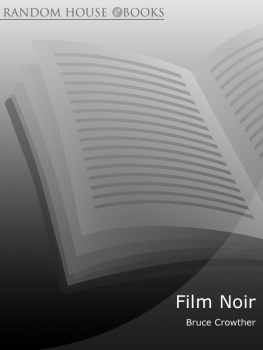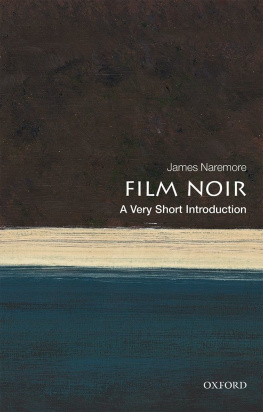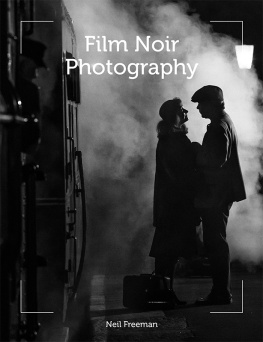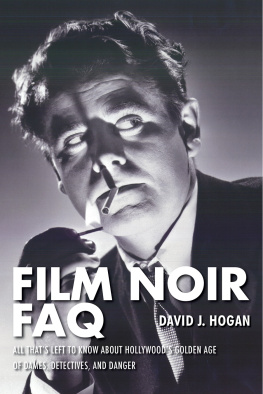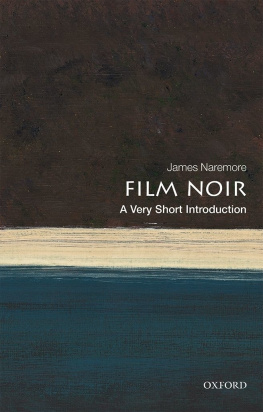Kimberly Truhler - Film Noir Style The Killer 1940s
Here you can read online Kimberly Truhler - Film Noir Style The Killer 1940s full text of the book (entire story) in english for free. Download pdf and epub, get meaning, cover and reviews about this ebook. year: 2020, publisher: GoodKnight Books, genre: Non-fiction. Description of the work, (preface) as well as reviews are available. Best literature library LitArk.com created for fans of good reading and offers a wide selection of genres:
Romance novel
Science fiction
Adventure
Detective
Science
History
Home and family
Prose
Art
Politics
Computer
Non-fiction
Religion
Business
Children
Humor
Choose a favorite category and find really read worthwhile books. Enjoy immersion in the world of imagination, feel the emotions of the characters or learn something new for yourself, make an fascinating discovery.
- Book:Film Noir Style The Killer 1940s
- Author:
- Publisher:GoodKnight Books
- Genre:
- Year:2020
- Rating:5 / 5
- Favourites:Add to favourites
- Your mark:
- 100
- 1
- 2
- 3
- 4
- 5
Film Noir Style The Killer 1940s: summary, description and annotation
We offer to read an annotation, description, summary or preface (depends on what the author of the book "Film Noir Style The Killer 1940s" wrote himself). If you haven't found the necessary information about the book — write in the comments, we will try to find it.
Film Noir Style The Killer 1940s — read online for free the complete book (whole text) full work
Below is the text of the book, divided by pages. System saving the place of the last page read, allows you to conveniently read the book "Film Noir Style The Killer 1940s" online for free, without having to search again every time where you left off. Put a bookmark, and you can go to the page where you finished reading at any time.
Font size:
Interval:
Bookmark:
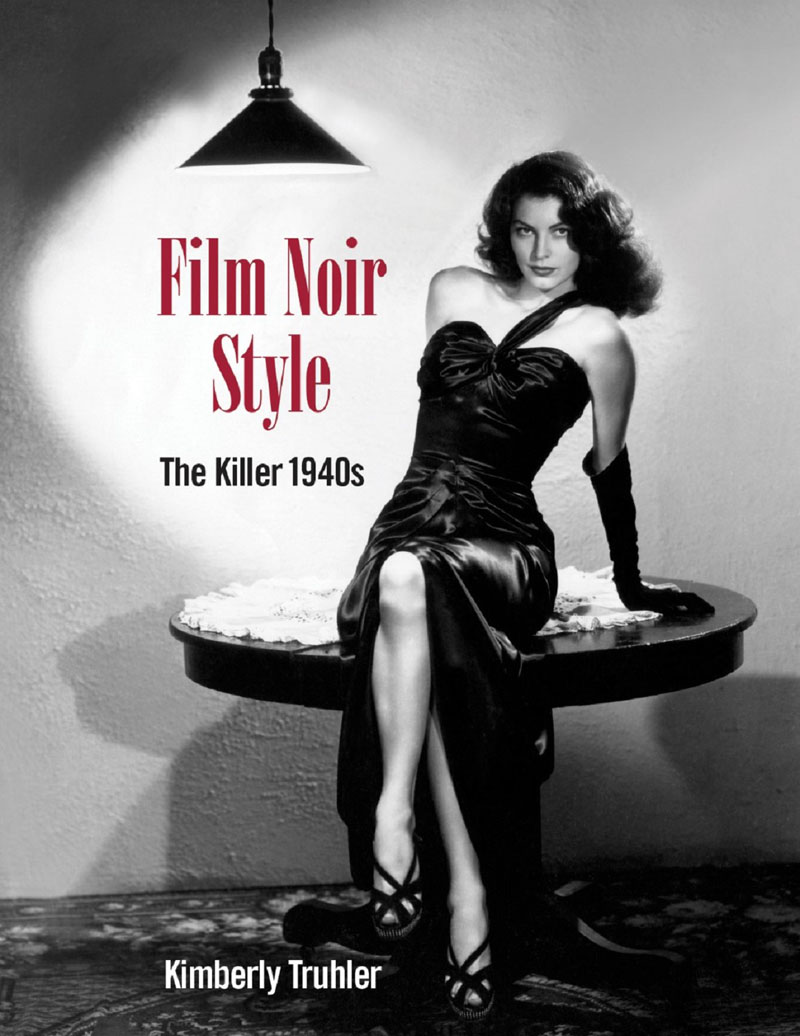


GoodKnight Books
2020 by Kimberly Truhler
All rights reserved. No part of this book may be reproduced or transmitted in any form or by any means, electronic or mechanical, including photocopying, or by any information storage and retrieval system without permission in writing from the publisher.
Published by GoodKnight Books, Pittsburgh, Pennsylvania.
Printed in the United States of America.
ISBN 9781732273597
Library of Congress Control Number: 2020940953
Cover photo of Ava Gardner, back cover photo of Orson Welles and Rita Hayworth, and frontispiece photo of Rita Hayworth all from the Everett Collection.
For Kevin
The best person I have ever known

Louise Brooks leads many men astray as the intrigante Lulu in Pandoras Box. (Everett Collection)
S tyle is everywhere in the world of film noir. Yes, the genre explores the dark side of human nature, centering on sins like lust and greed and on crimes ranging from robbery to murder. At the same time, many of the movies are sexy and stunningly beautiful. This book celebrates the many artists involved in their production. The spotlight, however, is on the costumes and their designers who too often are left out of the conversation. This omission is shocking considering that the words film noir so easily evoke images of strong women who are elegantly understated by day and dangerously glamorous by night. Or maybe noir conjures scenes of hard-boiled detectives and world-weary men in suits and trench coats trying to find their way in an America troubled by war.
Costume designers helped define the look of noir and did it so well that their influence lives on in both film and fashion, where many costumes have become iconic. This accomplishment is impressive considering that the bulk of these movies were not big-budget hits, the designs faced challenges from rationing during the war to pressure from the Motion Picture Production Code, and each studio had its own style voice and team of designers.
As a genre, film noir is different from any other. Unlike westerns or musicals, film noir was termed almost after the fact by French film critics in the mid-1940s. They observed a darker mood in American cinema that emerged during the decade and would continue into the 1950s.
Much of this mood grew from the advent of World War II. Studios started to turn to the tough crime fiction of authors such as James M. Cain, Dashiell Hammett, and Raymond Chandler as source material for their scripts. Screenwriters created appealing anti-heroes who blurred the lines between good and bad. Women were strong characters in the world of noir, often equal to the men, reflecting changing roles during the war especially in the workforce.

The German Expressionist film The Cabinet of Dr. Caligari (1920) was influential on noir, especially The Lady from Shanghai (1947). (Everett Collection)
In many cases the directors and cinematographers were migrs who had fled Eastern Europe during the rise of Nazism. Not only did their artistic vision help shape the look of noir, their suffering and alienation brought even more realism to the genre. As a result, the two types of movies that would make up film noircrime thrillers and murder dramasstood in sharp contrast to the romantic fantasies of earlier decades and reflected that it was hard, if not impossible, for many to achieve the American dream.
Some of film noirs strongest cinematic influences are found in 1920s German Expressionism. That movement had its origins in the anger, betrayal, and isolation that Germany experienced as a result of World War I. The countrys mood was reflected in the style of the movies, from scenes shot at odd angles to dramatic cinematography that often was filled with more shadows than light. They also featured seductive intriganteswomen who intriguepredecessors to the even more dangerous femmes fatales. Their stories were told with a frank portrayal of sexuality that Hollywoods Production Code would soon outlaw.
UFA, Germanys film production company, was a source of motion pictures that would inspire noir, such as Robert Wienes The Cabinet of Dr. Caligari (1920), F.W. Murnaus Nosferatu (1922), Fritz Langs Metropolis (1927) and M (1931), G.W. Pabsts Pandoras Box (1929), and Josef von Sternbergs international hit, The Blue Angel (1930). Many directors who spent time at UFA would create some of the best of noir. Fritz Lang made The Big Heat (1953), Sternberg did The Shanghai Gesture (1941), Robert Siodmak directed The Killers (1946), Michael Curtiz did Mildred Pierce (1945), and Alfred Hitchcock made Notorious (1946). Still more European migrs contributed to film noir once they started working in Hollywood, such as Otto Preminger, who directed Laura (1944), and Billy Wilder, who made Double Indemnity (1944).
Inspiration for film noir would come from America as well, especially in the years before the Production Code took effect. Pre-Code gangster pictures like William Wellmans The Public Enemy (1931) and Howard Hawks Scarface (1932) featured violent criminals as their main characters. It was the dawn of the anti-hero. In addition, horror films of the pre-Code era, such as Tod Brownings Dracula and James Whales Frankenstein (both 1931), helped to set the noir mood, especially the extraordinary darkness created by their cinematographers Karl Freund and Arthur Edeson, the latter of whom would later photograph The Maltese Falcon (1941).
Sternberg was another source of proto-noir once he started working in America. His renowned visual style, created with cinematographer Lee Garmes, included filtering light through venetian blinds. He also made a model intrigante of Marlene Dietrich in Morocco (1930) and especially in Shanghai Express (1932). His muse would influence many women in noir, from Lauren Bacall in To Have and Have Not (1944) to Lizabeth Scott in Dead Reckoning (1947).
The entry of the United States into World War II affected both the story lines and the costumes of film noir. The trench coat, which became a staple of the genre, had its origins in mens military uniforms. For practical purposes, this outerwear often became part of a veterans wardrobe once he returned home. But the biggest impact on 1940s style came as a result of nationwide rationing during the war, which stipulated what types of fabric could be used and, perhaps more important, how much fabric could be used. In March 1942 the War Production Board issued Limitation Order 85 to maximize the amount of cloth available for military use. L-85 was a strict set of rules and restrictions for the garment industry and civilian fashion. For example, the order dictated the maximum length and circumference of skirts and dresses. It also controlled the amount of detail in a design, whether it be pockets, pleating, collars, ruffles, bows, or buttons.
Next pageFont size:
Interval:
Bookmark:
Similar books «Film Noir Style The Killer 1940s»
Look at similar books to Film Noir Style The Killer 1940s. We have selected literature similar in name and meaning in the hope of providing readers with more options to find new, interesting, not yet read works.
Discussion, reviews of the book Film Noir Style The Killer 1940s and just readers' own opinions. Leave your comments, write what you think about the work, its meaning or the main characters. Specify what exactly you liked and what you didn't like, and why you think so.






